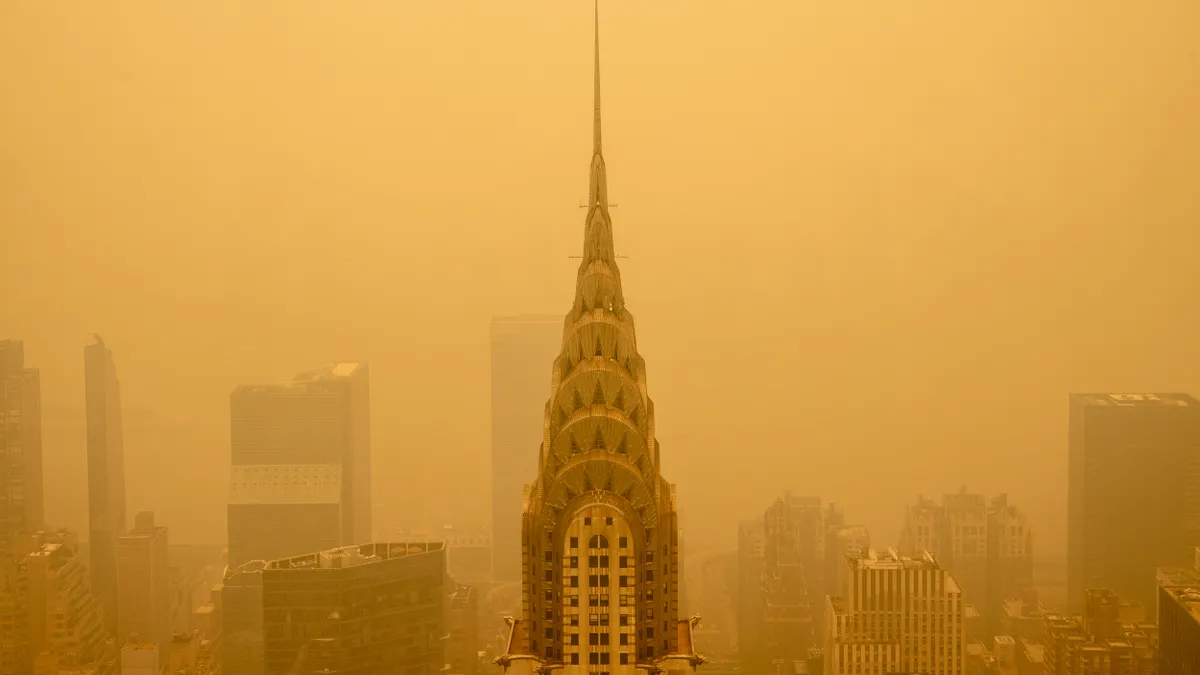California has lost over 751,000 acres in wildfires through July 30 — an area more than 29 times the size of the destruction it saw in 2023, according to the California Department of Forestry and Fire Protection. This year’s fires have destroyed or damaged 402 structures so far, compared with 71 structures at this time last year.
From 1996 to 2021, burned areas in central and Northern California have grown 320% larger than they would have in the absence of human activity-driven climate change, according to a peer-reviewed study published last June. And as temperatures soar, more and larger areas of the U.S. are expected to experience above-normal significant fire potential through October, according to forecasts from the National Interagency Fire Center.
While much of the focus on wildfires is on the devastation they leave in their wake, wildfires' impact extends indoors as well. “Wildfires produce massive quantities of smoke and ash,” said Jeff Landis, a spokesperson for the U.S. Environmental Protection Agency. “Indoor air quality largely reflects the quality of outdoor air.”
The consequences of poor indoor air quality, if left unmanaged, can be severe even for otherwise healthy individuals. For facility managers and building operators, good indoor air quality will likely grow in importance as wildfires grow in size, frequency, and intensity. Luckily, awareness of the risk — and the tools available to mitigate that risk — are improving as fires continue to spread, Landis said.
Mitigating risks
“While buildings provide a degree of protection from air pollution outdoors, they are not airtight,” Landis explained. “The small cracks and crevices in a building envelope provide enough space for air to move into and out of the building and carry particles indoors.”
Fine particulate matter, or PM 2.5, and volatile organic compounds are of particular concern and can be carried into a building via smoke. There’s still much to learn about how harmful VOCs are, according to Landis. While it’s more difficult to protect against these gases than it is for particles, carbon filters in some air systems may offer short-term protection, he said.
The EPA website links to ASHRAE’s planning framework for wildfire smoke protection in commercial buildings and 10 elements of a wildfire smoke readiness plan from that framework. Those elements include assessments of supplies, HVAC system and air quality measurement capabilities, air flows, building envelope, indoor air quality and contingency plans.
Andre Ramsey, CBRE’s head of health, safety and environment and property management, Americas, said the firm works with property teams to develop smoke readiness plans for wildfire season. “We assess ventilation and ensure we’re using high efficiency filters, changing them out regularly,” for example, Ramsey said.
While high-efficiency filters with a minimum efficiency reporting value rating of 13 or higher are a good step, building operators and facilities managers need to understand whether their HVAC systems can handle MERV filtration at that level. “If your fan isn’t powerful enough, then the high filtration will cause resistance and more problems,” said Ketan Mehta, vice president of global product management and marketing at TSI Inc.
Building operators should regularly assess both outdoor air quality and the condition of their HVAC system filters. “Have a look at the local air quality index and know its perimeter because if the outdoors is polluted, then so is the indoors,” Mehta said. “Then determine if you are using the right filtration.”
Also check whether your state has its own requirements for wildfire preparedness. “The West Coast will have more stringent rules than the East Coast, generally,” said Ramsey. At CBRE, he said, “we have wildfire preparedness plans that are specific to state requirements, if they have them. We do a kick-off call before wildfire season each year with our West Coast teams, and all of our property managers and engineering teams there must have extra training to respond.”
No matter what the state, a low-cost air pollution monitor is a good way to determine your IAQ and then act accordingly, Landis said. And portable air cleaners in occupied rooms can assist with mitigation efforts. “If the device is appropriately sized for the intended room, it can provide significant particle removal,” Landis said. “Do-it-yourself devices can also be used temporarily.”
When combined, these measures can significantly contribute to cleaner indoor air quality, Landis noted.





















